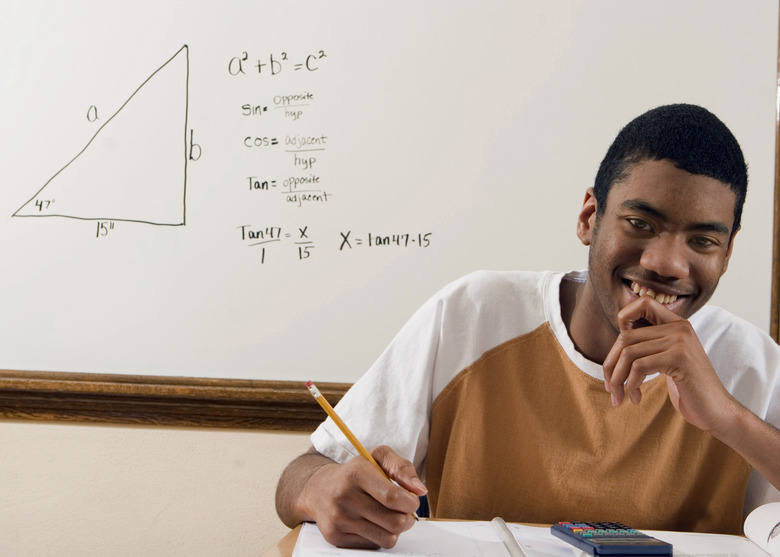Step-By-Step Geometry City Project
Whether your students are grade schoolers, tweens or adolescents, a geometry city project is an entertaining — and educational — way to teach math. As students reach the grade school years they develop the ability to not only identify geometric shapes, but to also combine forms and make a larger design. A geometry city lets students build math skills in an imaginative way, moving from basic abilities to more complex ones.
Map It Out
Map It Out
Before the students begin building, they need to map out their city. This adds a measurement component to the geometry lesson, incorporating more math knowledge to the activity. Give the students a piece of poster board or use the side of a large cardboard box as a base. The students can map out roads and spaces for buildings using a ruler and pencil. Have them draw two-dimensional shapes where each building will stand. For example, they can draw a small square for a house and a larger rectangle for a skyscraper. When the map is done, the students can trace over light pencil lines with a dark marker.
Two-Dimensional Option
Two-Dimensional Option
Children as young as 6 or 7 have the ability to combine multiple shapes into one. You can use two-dimensional shapes to make buildings or combine them with three-dimensional versions. To create two-dimensional buildings, have the children draw shapes that match their maps on thick card stock paper. Use rulers to create a straight edge for triangles, squares and rectangles. Ask the students to leave an inch or 2 extra at the bottom to make flaps to fold under and secure to the base. The students can also cut smaller shapes out of construction paper to make windows, doors or roofs. Glue the smaller shapes onto the larger ones, combining them to form compete buildings.
Three-Dimensional Structures
Three-Dimensional Structures
The students can combine their 2-D buildings with ones in 3-D or opt for a three-dimensional only city. Use folded paper to make box-like cubes or have the students sculpt the geometric forms using clay or paper mache. Students who are struggling to build their own shapes can use ready-made foam versions. Glue the shapes onto the base where they belong. This provides an opportunity for the students to match the shapes with their 3-D mates.
Age Appropriate Extensions
Age Appropriate Extensions
As children develop the ability to think more abstractly and use geometry in more complex ways, you can adapt the project to meet their learning needs. For example, middle school students can calculate the area of three-dimensional buildings. You can also have the students draw or sculpt the shapes to scale. Younger students in kindergarten or the early elementary years can use a simple scale such as 1 inch equals 1 foot, while older children can create a more intricate version.
References
Cite This Article
MLA
Loop, Erica. "Step-By-Step Geometry City Project" sciencing.com, https://www.sciencing.com/step-by-step-geometry-city-project-12750223/. 30 June 2011.
APA
Loop, Erica. (2011, June 30). Step-By-Step Geometry City Project. sciencing.com. Retrieved from https://www.sciencing.com/step-by-step-geometry-city-project-12750223/
Chicago
Loop, Erica. Step-By-Step Geometry City Project last modified August 30, 2022. https://www.sciencing.com/step-by-step-geometry-city-project-12750223/
